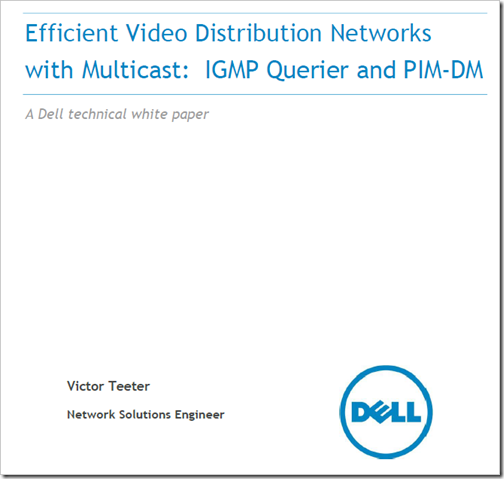Imagine these three scenarios…
- An avid F1 fan watching a live feed of the race and experiencing the adrenaline rush as the cars zoom past
- A remote employee watching a live feed of CEO’s all-hands meeting remotely and getting excited about company’s strategy and future
- A student taking a class online, watching the professor explain complex concepts through live video
What is the common factor in all of these?
The answer is easy: All these scenarios rely on live video feeds generated from one source but consumed by many end-users as well as various applications. In business, application where video is important include collaboration, broadcast messaging, training and video on demand. As these video distribution scenarios become part of our daily experience, the traditional unicast (one-way) video distribution and routing mechanisms where each data packet is transmitted to a single user, fall short. While this method of data transmission may be sufficient for a small number of users, it is not efficient enough to ensure the service delivery for a large group of users, especially when real time data transmission is required. This is where multicast-designed networks deliver efficient communications. Multicast uses network infrastructure efficiently by requiring the source to send a packet only once, even if it needs to be delivered to a large number of receivers. While multicast protocols and operation has been around for more than 10 years, Network administrators have not implemented it widely due to lack of performance and deployment complexity.
In simple terms, the multicast model consists of group of transmitters (or senders) and receivers. A typical multicast group contains one transmitter and one or more receivers. The receiver sends a “group join” message to network switches and routers via the Internet Group Multicast Protocol (IGMP). Multicast routers use PIM (Protocol Independent Multicast) protocols to keep track of active multicast receiver(s) and use this information to configure routing. The switches and routers then forward multicast traffic only to the receivers that have joined the multicast group, thus minimizing network latency and traffic impact.
With new Multicast functionality present in the upcoming Dell Networking OS 5.1 Release for select Gigabit and 10 Gigabit Ethernet switches, organizations can scale and overcome many performance challenges without the need for complex configurations, thanks to an improved, efficient implementation of the PIM and IGMP snooping features. Building efficient video distribution networks to support the scenarios outlined above can be easily accomplished with these enhanced feature sets. A new whitepaper from Dell Networking solutions team lays out sample blueprints to help companies accomplish and design their network for optimized multicast delivery of communications and video.
Click on this link or click on the image below to download it:
Upgrade your network today and start your engines! Continue the conversation on Twitter by following @DellNetworking and look for for more technical whitepapers and discussion on Dell TechCenter.
